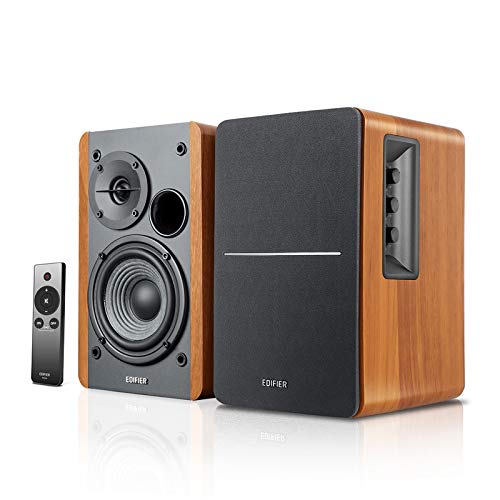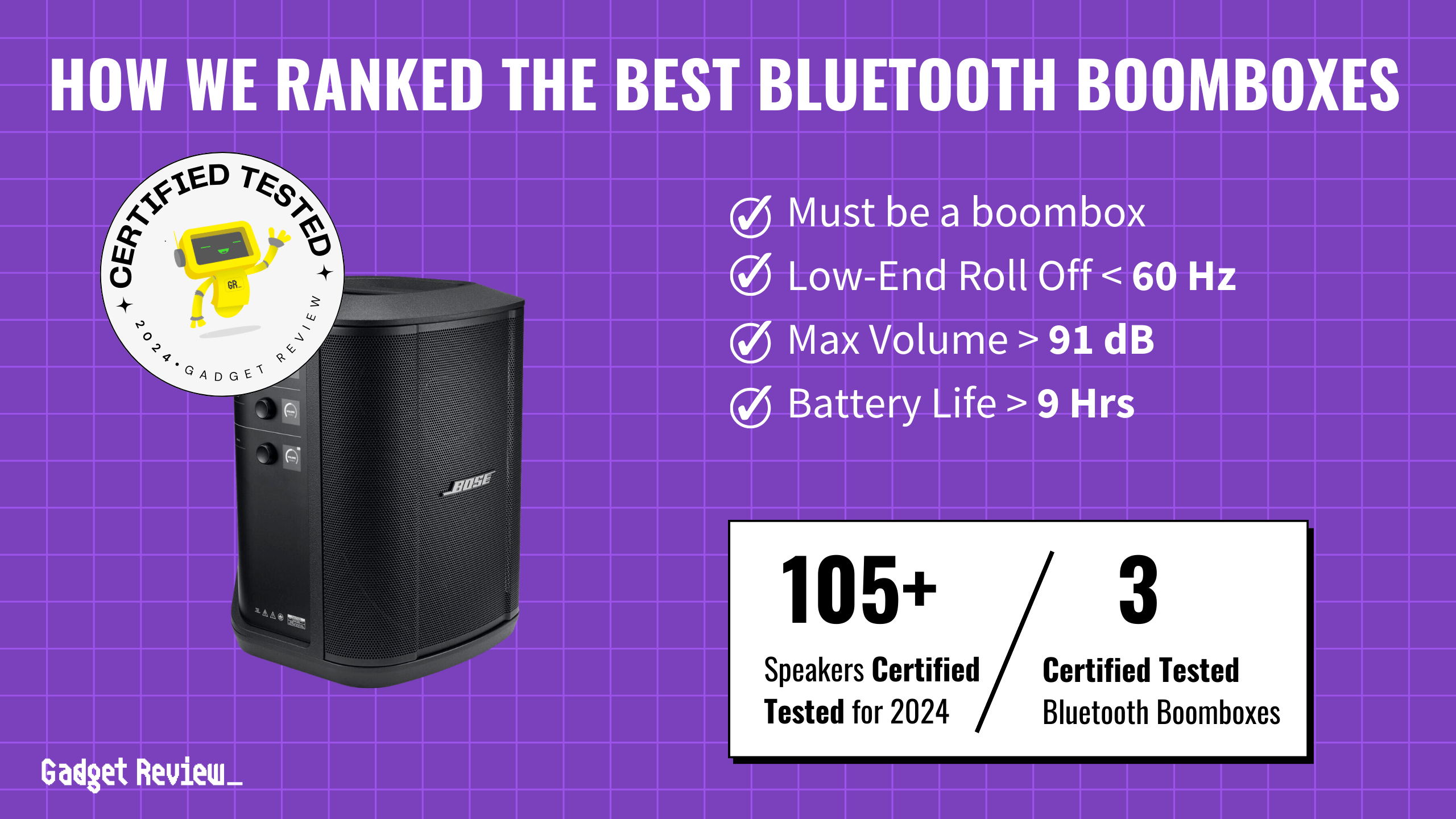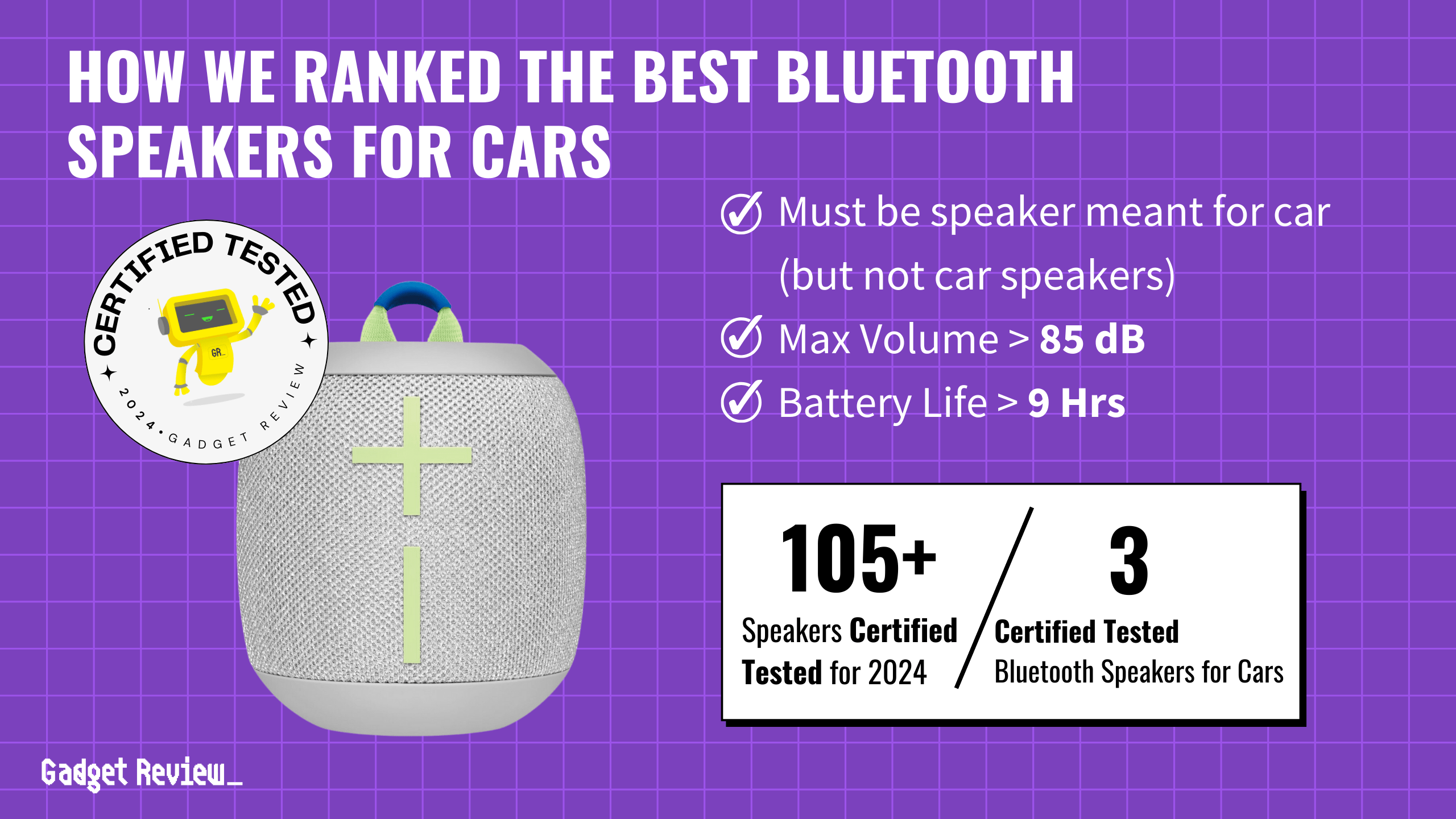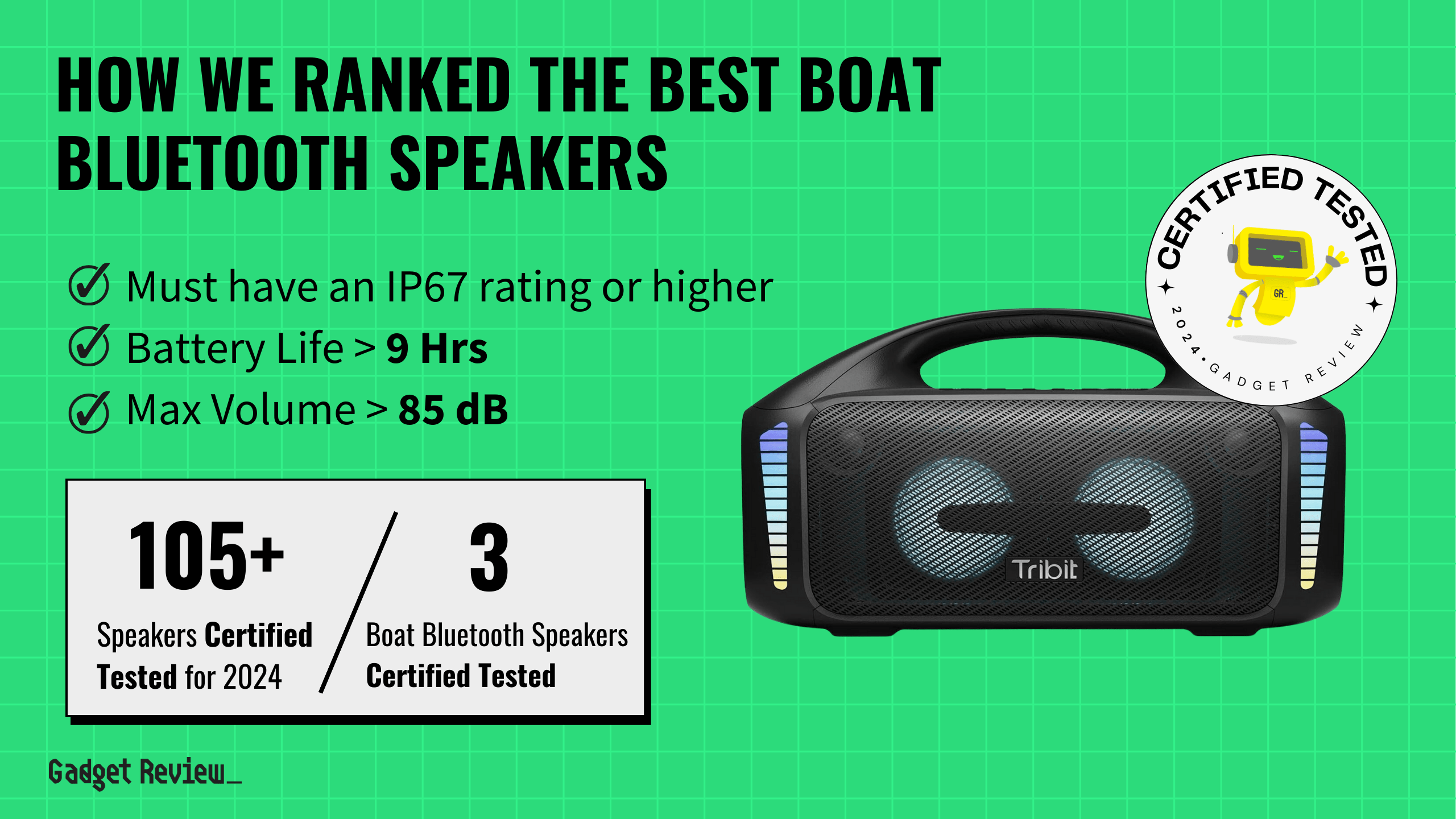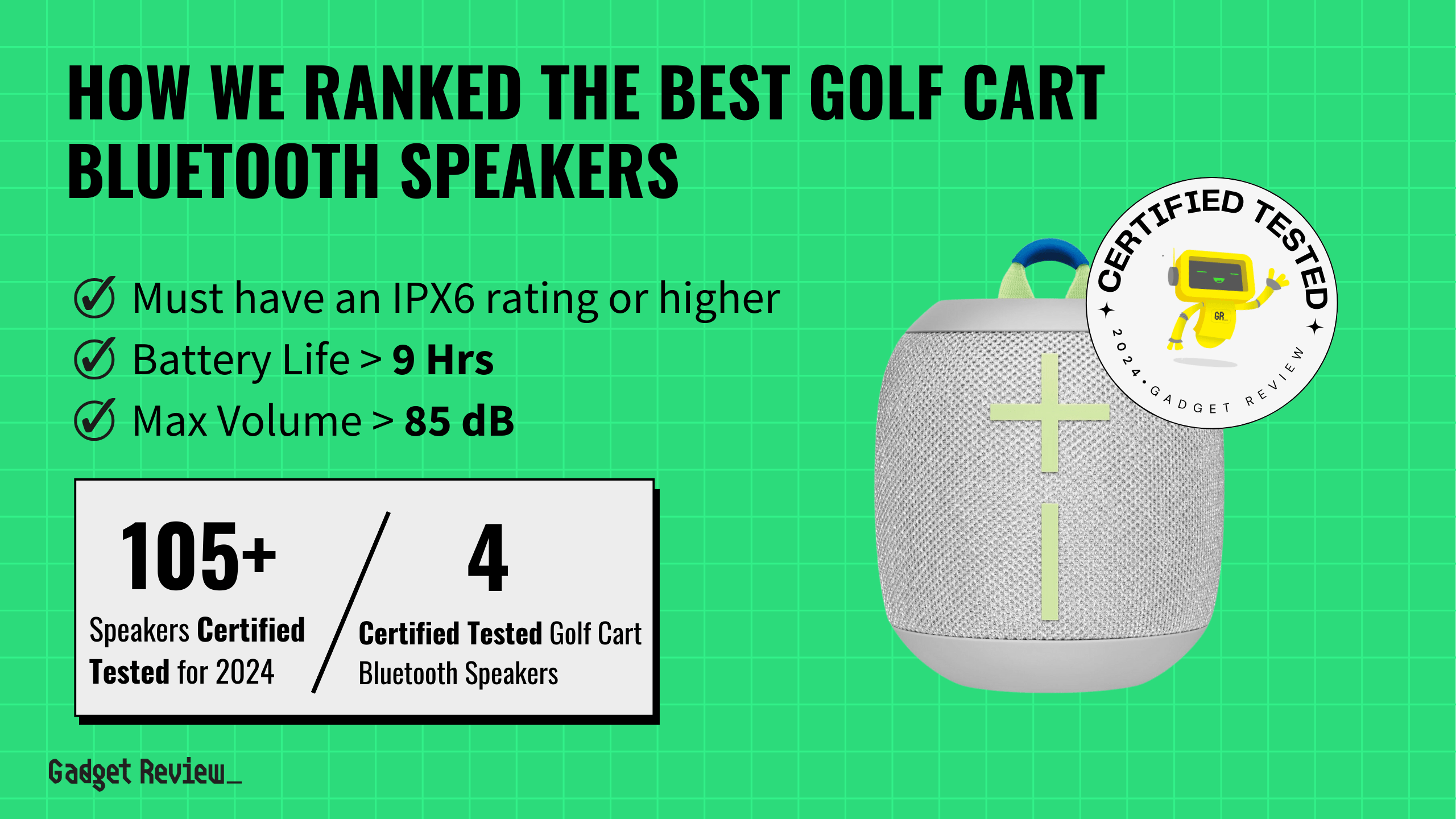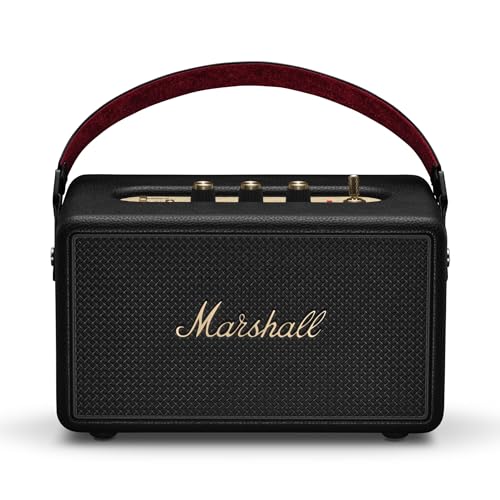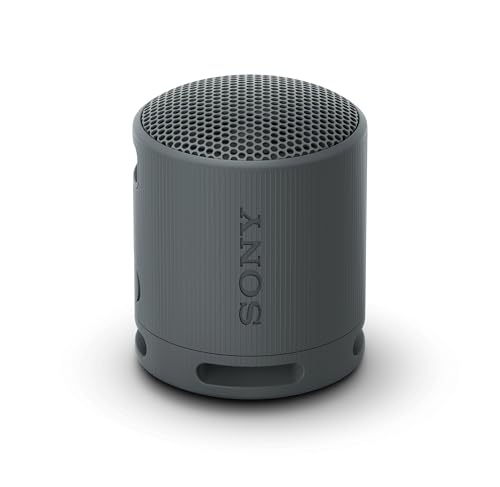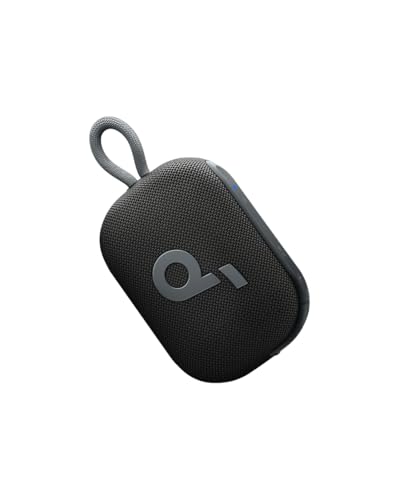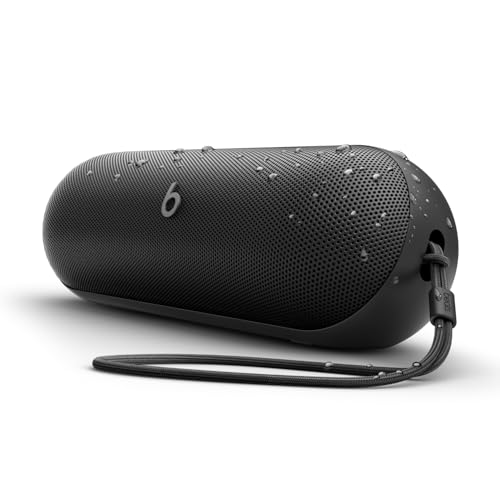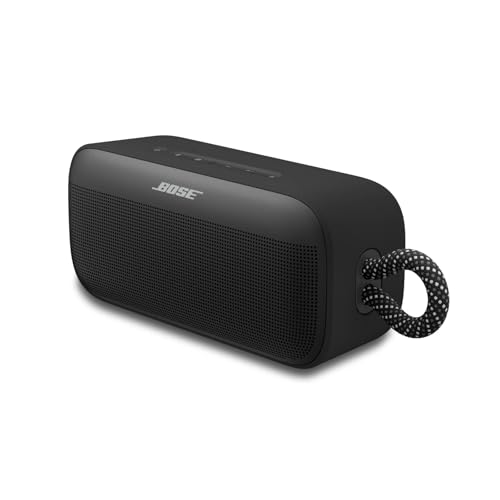What are the features that make the best stereo speakers? First, the sheer versatility and availability of stereo options make these the best speakers for nearly any need. Whether you’re installing home theater speakers or passive bookshelf speakers at an affordable price, you’ll be able to find a solid pick in the stereo speaker family.
If you’re on the fence between purchasing single speakers or a pair of stereo speakers, you can’t go wrong with the stereo option. Stereo speakers give you plenty of high-quality sound with crisp highs and deep lows, meaning you’ll get the full audio experience you want. Plus, with a wide variety of connectivity options, including Wi-Fi speakers, you won’t have to worry about not being able to play from your favorite audio sources.
Keep reading to learn more about the best stereo speakers, what kind of options are available to you, and what specific features you should consider most when shopping.
Top Stereo Speakers
#1 Edifier R1280TS 4-Inch Speakers
Award: TOP PICK
WHY WE LIKE IT: With dual RCA inputs, these speakers enable switching between two different inputs easily. They feature a woofer output and have controls for the volume, treble, and bass.
- Powerful 4-inch built-in subwoofer
- Subwoofer output
- Dual RCA ports enable switching between two inputs easily
- Relatively large
These Edifier R1280Ts 4-inch speakers boast a variety of inputs, allowing users to connect a huge selection of gadgets. A subwoofer output with auto detection enables connecting powerful external subwoofer systems. This device boasts dual RCA inputs, so users can connect two different devices simultaneously. With 42W of power, this device delivers powerful sounds and it has a built-in 4-inch subwoofer unit and 13mm silk dome tweeter unit, delivering high-fidelity audio. However, this sound system is relatively large.
Built-in control dials adjust the treble, volume, and bass. This device comes with a remote control for muting, and adjusting various settings from afar. A soundfield Spatializer button helps users to optimize the listening experience. These dual-channel speakers have a sophisticated design with a removable mesh griller to enable hassle-free cleaning. A wood enclosure brings classic vibes to the living room or home theater. This system comes with a remote control for simple operation.
#2 Pyle PCB4BK 4-inch Speakers
Award: HONORABLE MENTION
WHY WE LIKE IT: Featuring outstanding compact construction, these speakers fit easily on bookshelves and television stands. They are EMF-shielded, so they won’t cause interference with CRT TVs and monitors
- TV-friendly EMF-shielded design
- Outstanding bass
- Compact construction
- So-so frequency response range
- They need an amplifier to connect to TVs or computers
With a power handling capacity of 200W, these Pyle PCB4BK produce a high sound resonance. The speakers are excellent for watching movies, streaming movies, and gaming. They have a video-shielded design that won’t distort sound from CRT TVs and monitors. The 4-inch paper cone drivers in this device produce powerful, refined sounds. However, the frequency response range of 80 Hz to 18,000 Hz, is a bit low, and consequently, the system delivers somehow muted highs and bass.
They produce excellent mids, so they are ideal for movies and TV shows. Made of premium materials, these speakers are durable, and they have a black color scheme that blends in with most home theater equipment. The audio system supports surround sound, offering immersive , positional audio. These mini speakers are compact enough to be installed on TV standards and bookshelves. They are compatible with a wide variety of amplifiers, connecting seamlessly to various devices.
#3 DOSS SoundBox XL Speakers
We’re sorry, this product is temporarily out of stock
Award: BEST CORDLESS SPEAKER
WHY WE LIKE IT: With a cordless system and a 3.5mm interface, this speaker provides a variety of connectivity options. It has a built-in TF card slot and a 2200 mAh rechargeable battery that runs for up to 10 hours
- Excellent cordless system
- Pairs with identical speaker to enhance audio output
- Dual bluetooth and 3.5mm modes
- Slow charging
Users seeking a wireless stereo audio system will be pleased with this DOSS SoundBox XL speaker. It has a strong 20W drivers with digital signal processing, delivering refined sounds. Connected via Bluetooth tech, this speaker works with smartphones, computers, and any Bluetooth-enable device. It has a built-in subwoofer, passive radiators, and bass booms that deliver excellent low sounds, and it comes with a charging adapter. However, its charging time of up to 4 hours is a bit slow.
This speaker pairs easily to a variety of devices, offering hassle-free installation. It also has a wireless stereo pairing system, connecting easily to another identical speaker, doubling the volume. With a built-in 2200mAh rechargeable battery, this speaker delivers up to 10 hours of music playtime before requiring recharging. It also has a 3.5mm interface and comes with an audio cable to provide wired connections. A TF card slot enables playing tracks directly from the speaker.
#4 Dual LU43PB 4-Inch Speakers
Award: BEST INSTALLATION MOUNTS
WHY WE LIKE IT: With 120-degree swiveling brackets, these speakers support installation on hooks and poles. They have a water-resistant shell and support both horizontal and vertical placement. A 4-inch subwoofer provides excellent low tones.
- Built-in 4-inch subwoofer
- Swivel mounting brackets
- Support horizontal and vertical placement
- They need an amplifier to connect to devices
Users seeking a sound system for outdoor use should consider the Dual LU43PB 4-inch speakers. These speakers are suitable for both indoor and outdoor placement and they feature mounting brackets for attaching to hooks, pools, and other mounting systems. Users can place these speakers by the pool area, patio, or on bookshelves. They boast a 4-inch woofer system that provides accurate acoustic dispersion. However, this system requires an amplifier to connect to computers and other devices.
The mounting brackets swivel 120 degrees to simplify installation. These speakers boast a weather-resistant UV coating for durability. With ABS construction, this system provides durability, and they have a versatile housing, supporting both horizontal and vertical palcement. A decent frequency response range of 100Hz and 20kHZ offers a diverse soundscape, while 40mm polypropylene cone midrange and 20mm Piezo tweeters deliver high-quality audio. The speakers support a peak of 100W for great resonance. With a digital optimized sound profile, these speakers deliver powerful bass.
#5 MusiBaby M88 Speaker
Award: BEST PORTABLE SYSTEM
WHY WE LIKE IT: With an IPX5-certified design, this system is ideal for outdoor use on the go. It boasts advanced BLE tech for hassle-free cordless pairing, and boats USB and TF card ports.
- Outstanding portable, water-resistant design
- Excellent battery life of up to 30 hours
- USB connector and TF card slot
- Relatively low bass
The MusiBaby M88 speaker features an outstanding IPX5 waterproof, supporting installation in both indoors and outdoor spaces. This system has a 360° degree sound system that delivers sound in all directions. With a rich sound profile, this speaker produces accurate sounds with rich mids, highs, and bass. The sound system prevents sound distortion even at high volume settings. Onboard controls enable adjusting the volume as well as pausing and starting music tracks. However, compared to bigger speakers, this sound system has relatively low bass.
This sound system has a built-in rechargeable battery that runs for up to 30 hours. It uses Bluetooth 5.0 tech to connect wirelessly to a wide variety of devices. The Bluetooth chip in this model supports pairing to devices up to 100 feet away, and it’s quite efficient. A TF card slot will appeal to users who want to play music without connecting external devices. This device has a USB port for accommodating storage drives.
#6 Logitech Z207 2.0 Speakers
Award: BEST DUAL-MODE CONNECTION SYSTEM
WHY WE LIKE IT: A self-standing vertical system supports placement on desks with limited space. This unit has both Bluetooth and 3.5mm interfaces, allowing users to switch between wired and wireless connections easily.
- Dual Bluetooth and 3.5mm connectivity
- Space-saving vertical construction
- Decent bass
- Lacks bass control
With a classic design and powerful sounds, the Logitech Z207 2.0 speakers will meet the needs of users seeking a simple system for connecting to computers. This device has dual connection modes, featuring a Bluetooth interface for wireless connectivity. A 3.5mm interface and included cable let users connect computers and mobile devices easily. Featuring a vertical design, this system saves space on the desk or bookshelf. However, this system doesn’t have a control for the bass.
This sound system has a powered driver that offers full-range audio reproduction, and a passive radiator for delivering bass. With controls for the volume and Bluetooth, this device is easy to operate. It has an LED indicator for convenience and a self-standing design allows placing this device on desks, TV stands, and other places. This system enables switching fast between Bluetooth and wired inputs. With a peak of 10W of power, this system is loud.
Beginner’s Guide to Stereo Speakers
What Are Stereo Speakers?
Stereo speakers are essential pieces of audio gear that feature two separate speakers acting as a single device. One speaker is installed on the left, and the other is usually installed on the right. This allows you to achieve a more immersive learning experience since you can send two individual audio signals to the pair of speakers, which creates a more balanced and detailed sound with higher audio quality.
Stereo speakers are some of the most common types of speakers available on the market today. As such, there is a wide variety of different choices from which to choose, especially when you consider size, power, type, and volume.
Stereo Speakers vs Traditional Speakers
When you think of speakers, you’re very likely thinking about stereo speakers. These are some of the most common speakers available today and are often considered the traditional option. However, it’s still important to consider how these types of speakers are unique compared to others.
For starters, it’s worth noting that your speakers need to come in at least a pair to be considered stereo. This way, you can have two separate channels for more detailed sound quality. This differs from mono speakers, which only need one speaker to be considered mono.
| Feature | Stereo Speakers | Mono Speakers |
|---|---|---|
| Channels | Two (Left and Right) | One |
| Sound Quality | Higher quality with more detailed sound, creating a sense of space and depth | Sound is less detailed and lacks the dimensionality of stereo |
| Setup | Requires at least a pair of speakers | Only one speaker is needed |
| Listening Experience | Immersive and can simulate how we naturally hear sounds in an environment | More direct and straightforward, without the sense of space |
| Use Cases | Ideal for home theaters, music listening, and any situation where a rich audio experience is desired | Suitable for public announcements, simple background music, or where space and budget are limited |
| Flexibility | Wide range of products available with various features for different needs | Generally more limited in variety, often used for specific applications like PA systems |
| Design and Form Factor | Can vary widely, including bookshelf, floor-standing, in-wall, and more | Often compact and portable, designed for simplicity and ease of use |
| Connectivity | Can be wired or wireless, with options for integrating into smart home systems | Often simpler with fewer connectivity options, but many modern mono speakers now include wireless capabilities |
Apart from that, you’d be hard-pressed to find many differences. Most other individual types of speakers base their design, form factor, and functionality on the core options that stereo speakers offer. In a sense, though, you get more options with the stereo speaker category due to the sheer number of individual products available today, ranging from wireless speaker options to smart speaker devices.
How Stereo Speakers Work
Stereo speakers function essentially the same way as all other types of speakers. First, they’ll connect to a power source, whether a power amplifier or a wall outlet. Then, the speakers will connect to an audio source, either through wireless connectivity or through a direct audio cable connection.
After everything is connected and powered on, your stereo speakers receive an electrical audio signal from the source. Your speakers take that audio signal and translate it into sound waves through the speaker’s driver, an internal component found in all speakers. The driver creates vibrations that match the audio signal, creating the sound waves your ears can hear.
Do You Really Need Stereo Speakers?
If you want music readily available in your home, no matter the specific application, you really shouldn’t consider anything other than the best stereo speakers. Whether you’re installing a new home theater system, an outdoor speaker system, or simply a sound system on which you can listen to your favorite music, stereo speakers are the best choice.
Are Stereo Speakers Worth Buying?
- You Want to Create an Immersive Listening Experience: If you’re looking for the best audio quality in your home for casual listening or entertaining guests, a pair of speakers with stereo sound is a good start. Their two-channel configuration creates a clean sound quality that’s hard to beat with other types of speakers.
- You Want to Install a Home Theater System: Stereo systems make for the best home theater speakers because of their immersive sound quality, especially when paired with additional speakers like satellite speakers and subwoofers to create a surround sound effect. If you want the best audio quality for your home theater system, then stereo speakers are the best choice for you.
- You Need Flexibility in the Type of Speakers You Purchase: Stereo speakers are some of the most common types available on the market today. They come in a wide range of sizes and configurations, allowing you to find your exact match based on a wide variety of features, including sound quality, tonal balance, digital audio inputs, watts of power, and more. Both casual listeners and audio enthusiasts alike will be able to find the right speakers for their needs in this category.
Why Stereo Speakers May Not Be For You
- You’re Looking For Vehicle Speakers: If you need to install speakers into your boat or your car, you’ll need to look at options made specifically for those applications. Many vehicle speakers offer stereo configuration but are made only for use with a specific kind of vehicle. As such, standard stereo speakers won’t work here.
- You’re Looking for Studio Monitors: If you’re looking for the best studio monitors, you’ll most likely need to broaden your search past the best stereo speakers, which is too broad of a term for your needs. Studio monitors offer stereo sound, but they also offer other features specific to music production. They’re typically active speakers instead of the passive speakers found in many of the best home stereo systems. They are also typically made for nearfield listening, which is simply listening while sitting closer to the speakers to get the most details possible.
- You Want a More Personal Listening Experience: Installing a home stereo speaker system is great for a comprehensive and immersive listening experience. However, if you’re looking for a more personal listening experience, consider purchasing a nice pair of headphones instead. Listening to music on headphones can help you stay focused and avoid disturbing others.
How Long Will Stereo Speakers Last?
The total lifespan your stereo speakers give you depends on a wide range of factors, including how much use they get, the volume you play on them, and the quality of their internal components. In general, most audio industry experts, like those at Sound & Communications, agree that you could potentially get as much as 25 years out of your speakers before you need to replace them.
If you treat your speakers well and learn how to repair stereo speakers when needed, you can expect decades of performance from them. It’s also important to consider that high-end speakers last longer than budget speakers because they’re built with higher-quality internal components, equating to a longer overall lifespan. Of course, this doesn’t mean you won’t get a good lifespan out of a speaker system at a reasonable price; you just won’t get as much.
How to Choose Stereo Speakers
Finding the right stereo speakers for all of your listening needs can be a daunting task, especially when you realize the sheer number of options available. However, if you take a step-by-step approach to your decision-making process, the whole thing becomes easier.
First, determine what kind of stereo speakers you need. Then, narrow down your choices by considering size, power, portability, audio quality, and additional functionality. Include connectivity in your research, so you can always connect to your speakers when you want to listen to your favorite music or podcasts. Keep reading to learn about some other specific speaker specs to keep in mind.
Best Stereo Speakers Factors to Consider
1. What type of stereo speakers should you buy?
It seems like there are an infinite number of choices from which to consider when looking at stereo speakers. However, these are the most common types you should consider in your buying decision:
- Tower Speakers: These speakers are tall, sometimes reaching four feet high. They’re also often referred to as floor-standing speakers because they rest directly on the ground. Tower and floor-standing speakers are larger than other options, making them perfect for use in home theater systems or for a large- or medium-sized room. They also tend to produce more bass, making them great for bass-heavy music.
- Bookshelf Speakers: These are typically compact speakers that you can place directly on your bookshelf or a console table without taking up too much room. They’re perfect for minimalist audio enthusiasts or those living in small apartments and dorm rooms. Bookshelf speakers won’t produce as much volume as other types due to their smaller size.
- Soundbars: These speakers come in the form of a long horizontal bar, making them perfect for installation directly above or below a television. In fact, if you don’t have the budget or room for an entire home theater system, a soundbar paired with a subwoofer can make for an excellent alternative.
- Built-in Speakers: These speakers are built directly into the wall or ceiling, as their name implies. Installation for built-in speakers is much more complicated, but they make for a sleek, futuristic look that saves a ton of space.
- Outdoor Speakers: These speakers are meant to be used outside, even in inclement weather. They are built with weather-resistant internal components and housing, making them more durable than other types of speakers. If you like to host outdoor events or you spend a lot of time outside, these speakers are an excellent choice.
- Smart Speakers: These offer the same form factor and functionality as standard stereo speakers, with the added capabilities of a smart device. As such, a smart speaker typically offers voice assistant and smart home compatibility (Google Home, Amazon Alexa, Apple HomeKit), Wi-Fi connectivity, and seamless music streaming from platforms like Apple Music, Amazon Music, and Spotify.
- Portable Speakers: These speakers offer a built-in rechargeable battery, allowing you to take your favorite music with you wherever you want. These can be large party speakers or lightweight compact speakers, depending on the model you purchase. To be considered truly stereo, however, you’ll need to find an option that can link up with another portable speaker for that two-channel sound. Typically, a compatible speaker for this purpose ends up being the same model or at least the same brand.
2. What size should your stereo speakers be?
The size of your speakers is often determined by the exact type you purchase. For example, if you purchase tower speakers, you’ll be getting a much larger product than if you were to purchase bookshelf speakers. However, you’ll still need to put some thought into what size speaker you should buy and how that decision affects your overall home audio experience.
A general rule of thumb to follow is that the larger the speaker, the more volume you’ll get. If you’re looking for maximum volume, you’ll need to purchase either bigger speakers or more speakers.
You’ll also need to consider how much space you have in your home to install speakers. If you have a lot of floor space, tower speakers are a great choice. If not, you may want to consider bookshelf speakers or a soundbar. And, for those with no available space, you’ll want to pick up a tiny model, like the XSound Go speaker.
3. Should you buy active speakers or passive speakers for your stereo system?
Stereo systems are either active speakers or passive speakers. These terms refer to whether or not your speakers need to be connected directly to a power source in order to function. Let’s take a look at the pros and cons of both:
- Active Speakers: These require a direct connection to a power source because they have an integrated amplifier. Active speakers typically give you more tonal balance and more control over sound quality than passive speakers. However, these options are more expensive speakers than passive alternatives, which tend to offer a more affordable price, and can be harder to repair. Smart speakers and Bluetooth speakers are always active speakers, also sometimes called the best powered speakers.
- Passive Speakers: These speakers do not feature an integrated amplifier and thus need to be connected through a speaker cable to an AV receiver and amplifier to work properly. Passive speakers are lightweight and easy to maintain, but they may not offer a sound quality that is as balanced as active speakers.
4. What kind of connectivity options do your stereo speakers provide?
All speakers need to connect to an audio source to play music or other types of audio. You’ll need to be certain your audio devices can easily connect to your speakers.
Traditional stereo systems typically connect directly to stereo receivers, which feature built-in audio sources and a wide variety of different audio cable connections, including 3.5mm audio cable, digital audio inputs, HDMI inputs, phono input options, and more. Receivers also often feature more connection options for additional speakers, like subwoofer outputs.
Today, you’ll also have the option of purchasing wireless speakers and Wi-Fi speakers. These can connect to audio sources, such as your smartphones and tablets, or directly to music streaming services, like Apple Music and Spotify, without the need for any kind of wires or cables. This added convenience is nice, but you will sacrifice some audio quality, especially when compared to a direct connection.
5. What extra features or functionality should you consider for your stereo speakers?
Since there are so many different speaker options available for purchase today, there will also inevitably be a wide variety of individual features and functionalities available only on certain options. Take some time to consider some of these additional features to see if they’re worth it for your needs:
- Dolby Atmos compatibility for a more immersive surround sound experience.
- Bass-boosting modes to enhance bass-heavy music.
- Extra-long speaker cable for more flexible speaker placement.
- Built-in record player on the stereo receiver.
- Hi-res audio compatibility for clean, distortion-free sound quality.
- Matching stands for safe and more efficient speaker installation.


